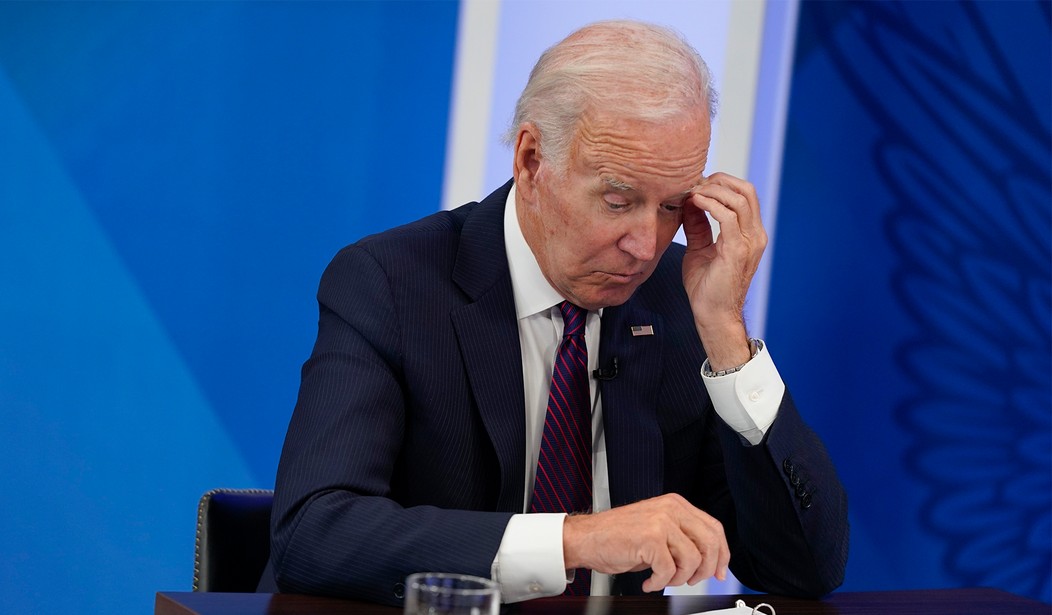The jobs report looks decent on its own — but the trendlines are all going the wrong way. The US economy added 263,000 jobs in September, the lowest level in more than a year, and a miss even off the lowered expectations of 275,000 by forecasters.
JUST IN: The Labor Department announced that employers added 263,000 jobs in September — the slowest month of hiring in 18 months. https://t.co/bvDgZCSQH9
— CBS News (@CBSNews) October 7, 2022
The unemployment rate dropped to 3.5%, but for the wrong reasons. First off, 229,000 workers left the labor force, which artificially lowers the U-3 result. But more worrisome is the population-employment ratios:
Total nonfarm payroll employment increased by 263,000 in September, and the unemployment rate edged down to 3.5 percent, the U.S. Bureau of Labor Statistics reported today. Notable job gains occurred in leisure and hospitality and in health care. …
The labor force participation rate was little changed at 62.3 percent in September, and the employment-population ratio was unchanged at 60.1 percent. Both measures are 1.1 percentage points below their values in February 2020, prior to the coronavirus (COVID-19) pandemic.
This is the key measure for pandemic recovery, and we are not yet there. We could — and I often do — calculate the dynamic number jobs necessary to complete the pandemic recovery, but this metric is an easier measure. We still have an overhang of people who cannot find a job and who are not yet looking either, for whatever reason that may be.
The Bureau of Labor Statistics tracks that, and that measure isn’t improving much at all:
The number of persons not in the labor force who currently want a job was little changed at 5.8 million in September and remains above its February 2020 level of 5.0 million. These individuals were not counted as unemployed because they were not actively looking for work during the 4 weeks preceding the survey or were unavailable to take a job.
Among those not in the labor force who wanted a job, the number of persons marginally attached to the labor force was little changed in September at 1.6 million. These individuals wanted and were available for work and had looked for a job sometime in the prior 12 months but had not looked for work in the 4 weeks preceding the survey. The number of discouraged workers, a subset of the marginally attached who believed that no jobs were available for them, increased by 119,000 to 485,000 in September.
This looks as though we have created a smaller version of the overhang problem that developed after the Great Recession. The U-3 rates looked good but wage competition never significantly developed, leading to nearly a decade of stagnation in wages. Analysts tried to blame it on retirements and aging Baby Boomers, but when production-dampening policies and investment obstacles got removed in the Trump administration, the overhang suddenly dissipated and organic wage growth returned.
Given that the Biden administration is pursuing the same dampening policies on production and investment, especially in energy and its impact on business expansion, we shouldn’t be surprised to see the same dynamics developing again.
Again, we shouldn’t oversell the negatives on this report; 263K isn’t a bad number on its own. But this isn’t a situation where we can look at the nominal top-line number alone. CNBC’s Rick Santelli gives a pretty good overview of the mixed-bag results, and notes the warning signal from the participation rates:
Wages remained fairly constant, which is to say that workers continue to fall behind the inflationary wave:
September’s payroll figure marked a deceleration from the 315,000 gain in August and tied for the lowest monthly increase since April 2021.
In the closely watched wage numbers, average hourly earnings rose 0.3% on the month, in line with estimates, and 5% from a year ago, an increase that is still well above the pre-pandemic norm but 0.1 percentage point below the forecast.
Stock market futures moved lower after the release while government bond yields rose.
Again, we need to keep these results in proper perspective. This is not an awful jobs report in and of itself. Even the wage gains don’t look bad as a snapshot in time without the context of inflation. This isn’t even so bad as to deflect the Federal Reserve from its aggressive fight against inflation.
However, as Heather Long sums up, this looks like a big warning as to what lies ahead in the economy:
Bottom line: The US job market remains strong. People who want a job generally can get one.
But hiring is starting to slow down.
And pay gains are moderating.–>If you want a new job or a raise, ask now. It's likely to be harder in 2023https://t.co/4ZqKCNbKkI
— Heather Long (@byHeatherLong) October 7, 2022
In fact, the window for new jobs and raises may already be closing. This may be time to batten down hatches instead.









Join the conversation as a VIP Member